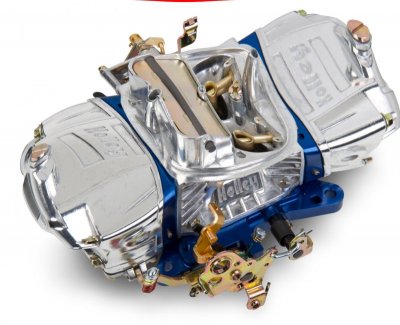- Local time
- 7:52 AM
- Joined
- Nov 20, 2013
- Messages
- 1,509
- Reaction score
- 295
- Location
- Ft Lauderdale fla.
Most but not all advance pots have an adjustment you have to feel around inside the nipple on the pot.. it's usually 3/32 Allen head... with a vacuum gauge on the lower manifold port on the carb and a cap on the timed port adjust timing and carb to get the most vacuum at idle... and lock down distributor. then put the cap on the manifold vacuum and plug the distributor line on the vacuum advance test drive hard and if a mis or lag and if you have under 24" vacuum back out the Allen screw a turn... reconnect and test drive same as before.. if it gets better go another turn if worse go in a turn go in one direction till it gets better then gets worse then go back to better and a 1/2turn more. The advance is set. If still a lag adjust the metering rods till better then the accelerator pump shot to the best conditions if still a miss how ever slight you may have too low a vacuum to operate the pot. Sometimes people will hook it up to manifold vacuum because it's stronger... but this is not the best solution... with big cams and low vacuum a mechanical advance distributor is the one... the springs can be changed and not always in pairs... as long as the engine has its max vacuum at idle it's in tune... the misses are either a slight advance curve adjustment or slight fuel adjustment... Holley double plumper is the easiest came to dial in because of the cams for the pump shot and there is was a green one that was squared off in profile known as the mopar one.. but you can cut you're own cam..... and the power valve on a Holley has a few sizes..... the electronic has a reluctant gap and the points have a gap and a dwel spec..... I like a .016 gap and will set it wrong according to how the lock screw pulls it when tight a .020 gap usually tightens to 16 but some i set to 13-.014 because they will open up and settle in on a new distributor.... rarely will they tighten up.... as for the dwell I guess by the duration and vary the gap to get the dwel by ear.... I mark the hold down with some white out... the timing will vary stock to wild 8°-22° on average 12° being most common...
Last edited:

















